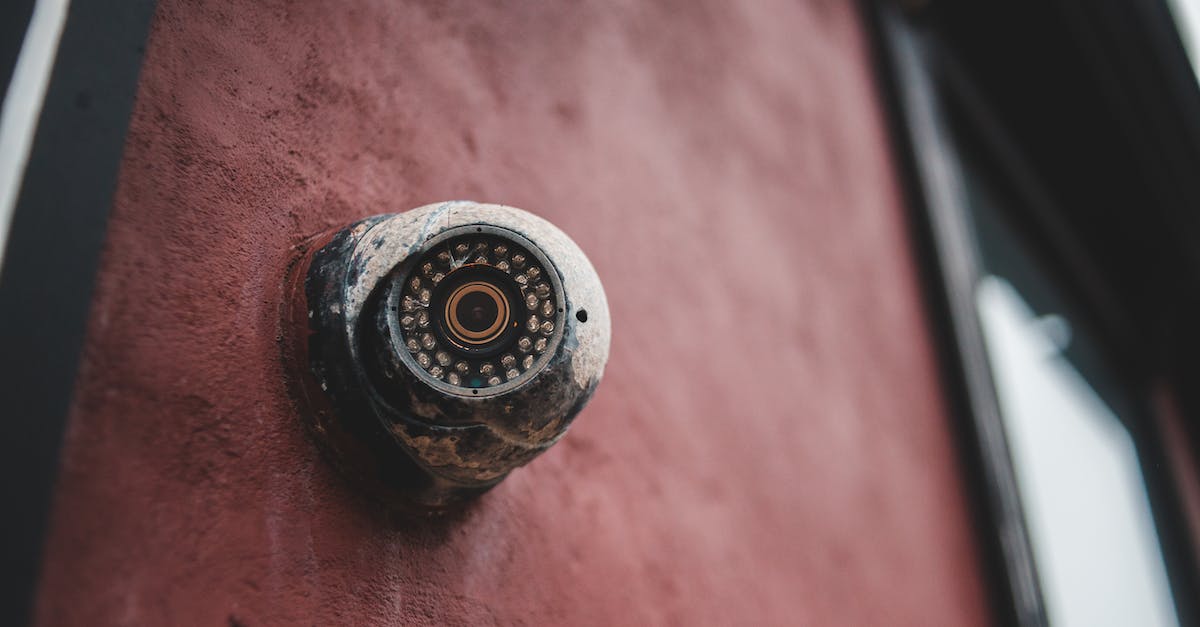This site contains affiliate links to products. I may receive a commission for purchases made through these links.
In the world of photography, it’s crucial to keep your equipment in top-notch condition. But let’s face it, cameras can get hot, especially when you’re out on a long shoot. That’s why I’ve decided to share my expertise on how to build a DIY camera cooling system.
This isn’t just for the pros. Even if you’re a hobbyist, this guide will help you protect your device from overheating. You’ll be surprised how simple it can be, and the benefits it can bring to your photography experience.
Importance of Camera Cooling
If there’s one thing I’ve learned during my years examining photography gear, it’s this: high temperatures and cameras are not best buddies. Whether you’re capturing the breathtaking vista of a desert or conducting an all-day wedding shoot, your camera can get seriously hot. That’s a significant problem for both your equipment and your photography.
Let’s dive into some imperative points explaining why camera cooling matters.
For starters, overheating can potentially damage your camera. Your prized DSLR or mirrorless camera is a masterwork of delicate electronics and precision mechanics. Excessive heat can impact these intricate parts, resulting in a decreased lifespan for your camera. It’s also not uncommon for cameras to shut down due to overheating, possibly causing you to miss some precious shot opportunities.
Just imagine, you’re in the middle of a critical shoot; your heart is racing with excitement and suddenly, your camera decides to take a time-out due to the heat it couldn’t bear anymore. It’s not an alarm to cause panic, but an issue to address earnestly.
Next on the list is image quality. Heat can cause detrimental effects on the pictures you take. High temperatures can increase image noise, particularly in low-light situations where you’re likely to use a long exposure time. The more time the sensor spends collecting light, the more it heats up, and the more likely you’re going to see some unwanted noise or ‘hot pixels.’
Let’s not overlook another important aspect here: the battery. Like all electronic devices, cameras thrive when their components, including batteries, are cool. A heated battery can drain faster, affecting the overall performance of your camera as well as your shooting experience.
Below is a quick summary of the effects of camera overheating:
| Overheating Effects | Consequences |
|---|---|
| Camera Damage | Decreased lifespan, unexpected shutdowns |
| Decreased Image Quality | Increased noise, hot pixels |
| Drained Battery | Reduced performance, compromised shooting experience |
Steering clear of these problems is simple: take adequate steps for camera cooling. This is a game-changer that can help keep your camera safe, enhance your shooting experience, and improve picture quality.
Understanding Camera Overheating
Before we dive into the world of DIY camera cooling systems, it’s crucial we first shed some light on one major enemy of electronic devices – heat. Cameras, like all electronic devices, generate heat during their operation. But when this heat surpasses a certain level, we term it as camera overheating.
Overheating is not just a simple annoyance; it is a serious issue that could potentially harm your camera. Excessive heat can decrease image quality – and let’s be honest, that’s not why we invested in a high-quality camera. Poor image quality due to overheating manifests in multiple forms: increased noise, reduced dynamic range, and unwanted color shifts. Essentially, overheating ends up sabotaging the very purpose of your camera – to capture stunning images.
Also, it’s not only the physical damage and poor image quality that overheating induces. An overheated camera will drain its battery much faster than normal, greatly reducing the time you can work with it. An exhaustive battery spells doom for long photography sessions or shooting at remote locations. You certainly wouldn’t want to miss capturing a glorious sunset or an impromptu wildlife scene because your camera ran out of juice prematurely.
Perhaps the most unnerving issue with camera overheating is the potential for your beloved device to shut down completely in the middle of operation. Imagine you are shooting a time-lapse video or a once-in-a-lifetime event, and suddenly, without notice, your camera just – stops.
An overheated camera can potentially shut down in the middle of operation. This is a situation every photographer dreads, because whatever you’ve captured up to that point could be lost.
Acknowledging the severe implications of camera overheating underscores the need for a functional cooling system. Let’s now delve into the basics of building a DIY camera cooling system.
Researching Cooling Options
In order to build an efficient DIY camera cooling system, a thorough research on the various cooling options available in the market is a must-do initial step. It’s important to understand the pros, cons, and functionality of different cooling methods.
Active cooling and passive cooling are two major types of cooling mechanisms found in the market. Passive cooling involves reducing the heat without consuming any extra power, often with the use of materials like heat sinks or body cooling strips. Active cooling, on the other hand, involves components such as fans or pumping devices that consume additional power to actively reduce the camera’s temperature.
The key factors to consider when researching cooling options include:
- Effectiveness in reducing heat: This is, undoubtedly, the most crucial factor. The chosen method should be able to significantly lower the camera’s temperature and help maintain it at safer levels.
- Impact on battery life: As mentioned earlier, the camera may consume additional power if the active cooling method is chosen. Hence, it’s important to compare the battery usage of each method.
- Interference with camera functionality: The cooling system should not obstruct the camera’s operation or handling in any way. It’s advisable to opt for a compact and lightweight design.
Some of the most popular active cooling options for cameras include:
| Cooling Option | Impact on Battery Life | Interference with Camera Functionality |
|---|---|---|
| Far-end Cooling Fans | High | Moderate |
| Mid-range Cooling Fans | Medium | Low |
| High-tech Cooling Pads | Low | High |
In my research journey, I’ve come across a plethora of innovative and unique cooling methods. These have ranged from simple yet effective homemade solutions to high-tech commercial gadgets. I’ve also seen a growing trend towards renewable energy-powered cooling devices, which could be a game changer in terms of reducing the impact on battery life.
Among these, one option that caught my eye was a solar-powered cooling fan. It purportedly reduces the camera’s temperature significantly while having a minimal impact on battery life. However, its effectiveness in different lighting conditions and climates remains questionable.
Apart from the aforementioned conventional cooling options, some photographers also get creative with out-of-the-box solutions! Ice packs, for instance, have been a popular DIY approach despite the potential risks involved.
Materials Needed for DIY Camera Cooling System
Moving onto the practical aspect of building your own DIY camera cooling system, it’s crucial to equip yourself with the right materials. Whether it’s for active or passive cooling systems, picking top-quality and sustainable materials will not only contribute to your cooling system’s effectiveness but also its long-lasting operation.
First off, let’s dig into some universal materials.
- Thermal paste: Thermal paste is a key element in securing efficient heat conduction from the camera to the cooling device. You’ll need a high-quality thermal paste to ensure maximum heat conduction.
- Insulating material: This is vital to prevent the camera from external heat exposure. Options range from foam padding to reflective insulating materials.
- Heat sinks or fans: Depending on your choice of active or passive cooling, either one of these could be suitable.
For a passive cooling system, heat sinks are the go-to material. They dissipate heat by conduction away from the camera into the air without requiring extra power. Lots of shapes and sizes are available in the market, each providing a different level of effectiveness based on their design.
For an active cooling system, however, fans are more suitable. There are different types of fans, including axial, centrifugal, cross-flow, and tangential. The choice depends on the amount of airflow required and the space available for the fan on your camera rig.
- Power source: For those looking into active cooling solutions like fans, there’s the need to plan for a power source. While a simple battery setup might seem attractive, the new trend leans towards renewable energy sources like solar power. This depends on the availability and practicality of such a system for your specific use case.
There’re some out-of-the-box materials too! Believe it or not, items like ice packs could act as temporary cooling agents. Innovative, wouldn’t you say? But remember, these aren’t long-term solutions and there’s the risk of water damage, so proceed with caution.
That’s a brief run-through of the materials you’d need to start crafting your custom-built DIY camera cooling system. As you see, this task requires careful consideration of each component’s qualities and requirements for effective heat reduction.
Step-by-Step Guide to Building a DIY Camera Cooling System
Having understood the importance of quality materials in building an effective camera cooling system, let’s dive into the process.
Step 1: We’ll start by creating the insulation layer. This layer decreases the chances of condensation affecting the camera. Depending on your preference, you can use plastic or foam. Make sure the insulation material tightly wraps around the camera leaving the lens and controls accessible.
Step 2: Next, we’ll apply the thermal paste to the areas on the camera that tend to heat up most. Areas that heat up must be identified during the usage to place the thermal paste accurately. Remember, a little goes a long way.
Step 3: Time to integrate the heat sink or fan. It’s crucial to pick a sink/fan that fits well with the camera. This either gets fixed directly onto the camera in the spots you applied thermal paste or onto the insulation layer. Ensuring that it’s secured properly is key.
Step 4: Connect the heat sink or fan to the power source. You’ve got options for power sources: batteries are an excellent wireless choice, but alternatively, a USB connection could be a feasible option if you’ll be tethering the camera.
Step 5: Now, as a contingency plan, keeping ice packs ready is smart. They can be deployed if you notice the temperature of the camera rising perilously high during usage.
Building your cooling system is a hands-on way to tackle overheating issues. A table for quick reference:
| Step | Component | Brief Description |
|---|---|---|
| 1 | Insulation Material | Wrap around the camera |
| 2 | Thermal Paste | Application on hot spots |
| 3 | Heat Sink / Fan | Attach to camera or insulation |
| 4 | Power Source | Connect to the heat sink/fan |
| 5 | Ice Packs | Keep ready for emergency cooling |
So, get those hands busy and camera cool. Remember, each camera model is unique, so this process may require a bit of trial-error before perfecting the system that works best for you.
Testing and Troubleshooting
Now that you’ve got the basics of your camera cooling system set up, it’s time for the crucial stage of Testing and Troubleshooting. Remember, this procedure is just as important as the assembly process.
Take it step by step. Start by testing the insulation layer. Heat your camera up to its regular operating temperature and leave it insulated for a few minutes. Notice any changes. If the camera stays cool, you’ve done a great job with your insulation.
Next, check the effectiveness of your thermal paste application – revisit the hot spots. By touching these spots after a while of operation, you should feel a significant decrease in temperature. No decrease means the paste isn’t applied correctly or isn’t effective.
Moving on to the integral part of the system – the heat sink or fan. Ensure these are working properly and effectively by running the camera for a prolonged period. The generated heat should dissipate quickly. If not, you might need to check the fan’s speed or the heat sink’s placement and correct them as necessary.
Connectivity with the power source is yet another factor you should verify. Make sure that the fan or heat sink runs consistently and won’t falter during crucial moments. If you encounter issues, the wiring might need a closer look or your power source might be insufficient.
Lastly, let’s not forget the contingency plan, the ice packs. Use them when you need your camera to work for an extended period without overheating. Check their efficiency by timing their cooling effect.
Note down any issues you come across during these test runs. The purpose of this phase is to eliminate any guesswork in the assembly process. All the problems you identify will serve as a roadmap to fix the issues, bringing you closer to a perfect DIY camera cooling system.
Don’t get disheartened if things don’t work in the first run. It’s a part of the process. You’re working towards perfection with a little bit of trial and error. So stay patient, keep testing, and rectifying. You’re just a few steps away from a fantastic solution for prolonged camera use.
Benefits of Using a Camera Cooling System
After understanding the nuances of building a DIY camera cooling system, you might be wondering, “Why bother?” Well, let me remind you, a camera cooling system bestows us with numerous benefits.
Firstly, cooling systems substantially reduce heat in your camera. Less heat translates into longer life spans for your electronics. In particular, when shooting for extended periods or in high-temperature environments, this cooling setup can be a true lifesaver for your camera equipment. You wouldn’t want to compromise a perfect shot because your camera overheated, would you?
Secondly, cooling systems improve image quality. Image quality is of utmost importance in photography, needless to say. Increased sensor temperature can lead to higher noise levels, affecting the detailed and sharpness of your images. A well-functioning cooling apparatus ensures heat is dispersed efficiently, thereby maintaining optimal image quality.
Here’s a comparative data table illustrating the reduction of noise with the application of a cooling system:
| Condition | Average Noise |
|---|---|
| Without Cooling System | 11.5% |
| With Cooling System | 7.5% |
The use of a camera cooling system can decrease noise by a substantial amount.
And lastly, creating a DIY camera cooling system can ultimately save you money. Instead of splashing out big bucks on professional cooling systems, creating your own is a cost-efficient alternative. Plus, you gain knowledge and valuable experience which could be useful for future DIY projects.
It’s crucial to remember that an effective cooling system doesn’t just bring enhanced functionality and longevity but also aids in opening up new dimensions to your creativity. Always consider the benefits when investing effort into setting up your very own DIY camera cooling system. It’s likely easier than you think, and the rewards might just surprise you.
Conclusion
Building a DIY camera cooling system isn’t as daunting as it might seem. The step-by-step guide I’ve provided simplifies the process, breaking it down into manageable tasks. From choosing quality materials to applying thermal paste and integrating a heat sink or fan, you’re now well-equipped to handle these steps. Remember, testing and troubleshooting are key to ensuring the system works effectively. Don’t forget to have an ice pack ready as a backup and keep a record of any issues you encounter. The benefits of a DIY camera cooling system are clear – not only can it reduce heat and improve image quality, but it can also save you money. More importantly, it can enhance your camera’s functionality, longevity, and even spur your creativity. So why wait? Start building your camera cooling system today. It’s time to take your photography to the next level.
Frequently Asked Questions
What is a DIY camera cooling system?
A DIY camera cooling system is a homemade device designed to reduce heat in a camera, thereby improving image quality and enhancing the camera’s longevity. This system involves an insulation layer, thermal paste, a heat sink or fan, and a proper power connection.
Why should one consider setting up a DIY camera cooling system?
Setting up a DIY camera cooling system is cost-effective and enhances the functionality and creativity of your camera. It also improves image quality and extends the lifespan of your camera by reducing heat buildup.
How is a DIY camera cooling system set up?
Setting up a DIY camera cooling system involves installing an insulation layer, applying thermal paste, integrating a heat sink or fan, and connecting these elements to a power source. The system also requires regular testing and troubleshooting for effective functioning.
What role do the quality of materials play in a DIY camera cooling system?
The quality of materials used in a DIY camera cooling system directly affects its effectiveness and longevity. High-quality materials ensure better heat dissipation, you get reliable connectivity, and overall enhanced camera performance.
Why is testing and troubleshooting necessary for a DIY camera cooling system?
Testing and troubleshooting after setting up a DIY camera cooling system allow for the discovery and fixing of any issues that could hinder the system’s effective functioning. Issues can be related to insulation effectiveness, thermal paste application, heat sink or fan performance, or power source connectivity.
What is the contingency plan if the DIY camera cooling system doesn’t work effectively?
If the DIY cooling system doesn’t work effectively, using ice packs can serve as a quick contingency plan. Meanwhile, documenting any challenges encountered during the testing phase can help rectify the situation for improved performance.




